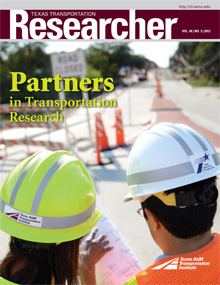The Numbers Are In
Texas highways are safer now thanks to scores of projects completed in the last few years to add shoulders and width on more than 1,000 miles of rural, two-lane highways, according to an analysis by the Texas A&M Transportation Institute (TTI).
The review of 189 Texas Department of Transportation (TxDOT) road projects around the state shows that wider pavements make highways safer and result in fewer crashes.
Recently, TxDOT asked TTI to analyze and review three years of pre- and post-improvement data on more than 1,000 miles of narrow two-lane highways that had been widened. The numbers show that on 1,159 miles of recently added highway shoulders, there were 133 fewer fatalities and 895 fewer injuries compared to prior to widening.
TTI has estimated that these projects could save up to 44 lives each year or 880 lives over 20 years, and prevent 298 injuries or 5,960 injuries, respectively.
“Safety is our top priority,” says TxDOT Executive Director Phil Wilson. “The agency’s roadway-widening initiative has been a tremendous success, for increasing safety on Texas highways, saving lives and potentially saving billions of dollars associated with fatal crashes and sustained injuries.”
In 2003, voters gave the Texas Transportation Commission the authority to issue $3 billion in bonds to pay for state highway improvements. The law stipulated that 20 percent of that amount must be used to fund projects that would reduce crashes or correct or improve hazardous locations on the state system. The Texas Legislature later increased the bonding authority to $6 billion. In 2004, TTI helped TxDOT identify locations across the state where the road-widening projects could yield the most significant crash reductions.
TTI is also analyzing recently completed projects — mostly from the 2009 safety bond initiative — but these projects reflect only one or two years of post-construction crash data. Still, as a result of completed widening projects from that bond initiative, fatalities were reduced by an average of five annually. The $29 million construction cost for those 37 projects — through the 20-year life of the project — could save an estimated $456.4 million from fewer fatalities and serious injuries.
Researchers expect to update their analysis once three years of crash data are available for the balance of safety improvement projects across the state.
“I am proud of the role I played in creating the Safety Bond Program, and I sincerely thank TxDOT and the people of Texas for making it happen,” says Sen. Steve Ogden.
TxDOT plans on expanding these efforts in the future in areas where widening improvements are needed.

